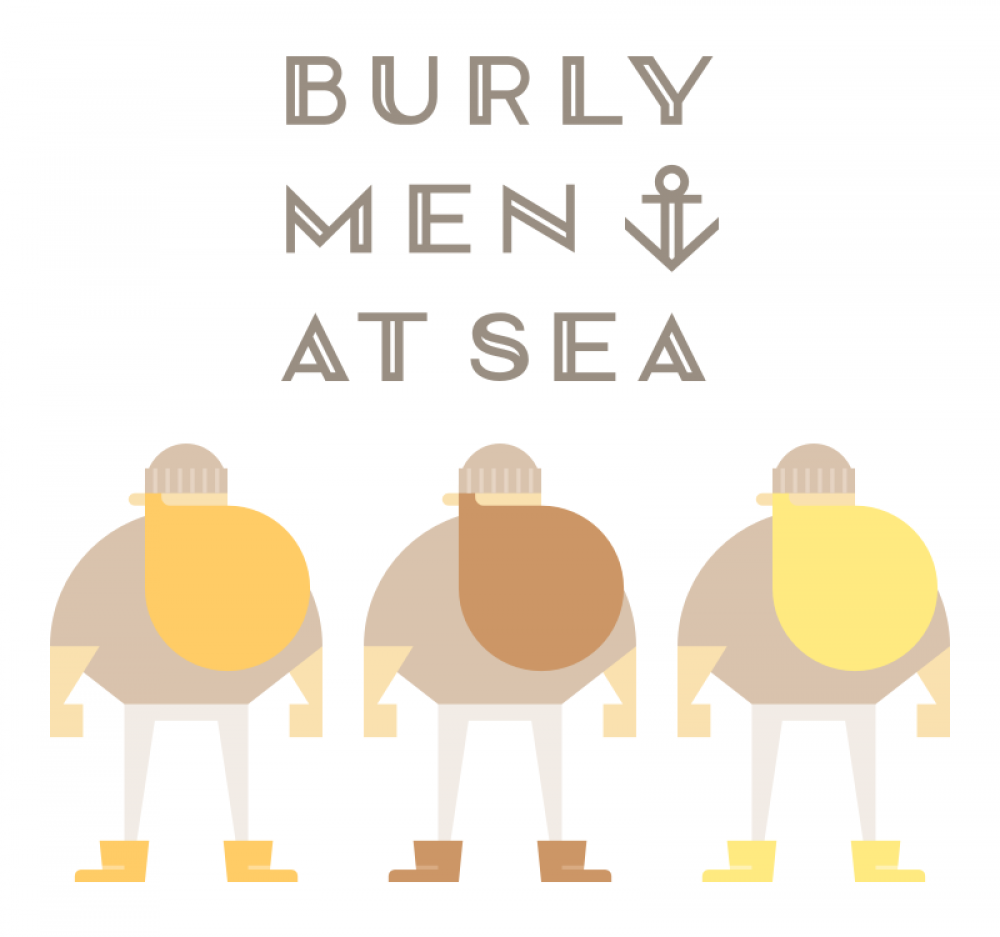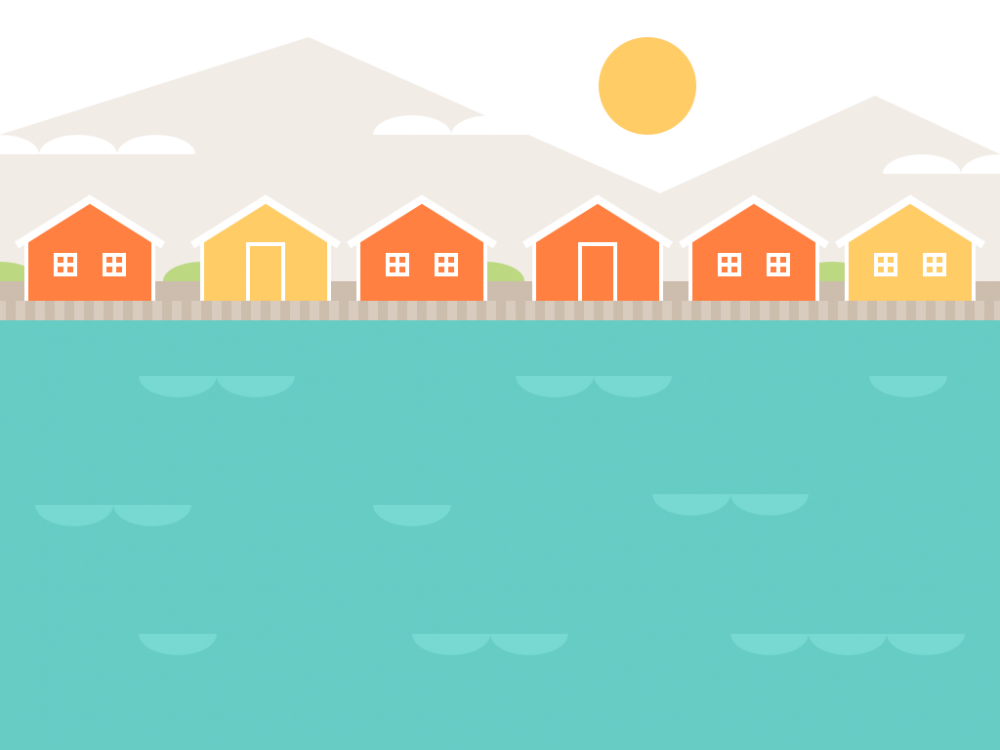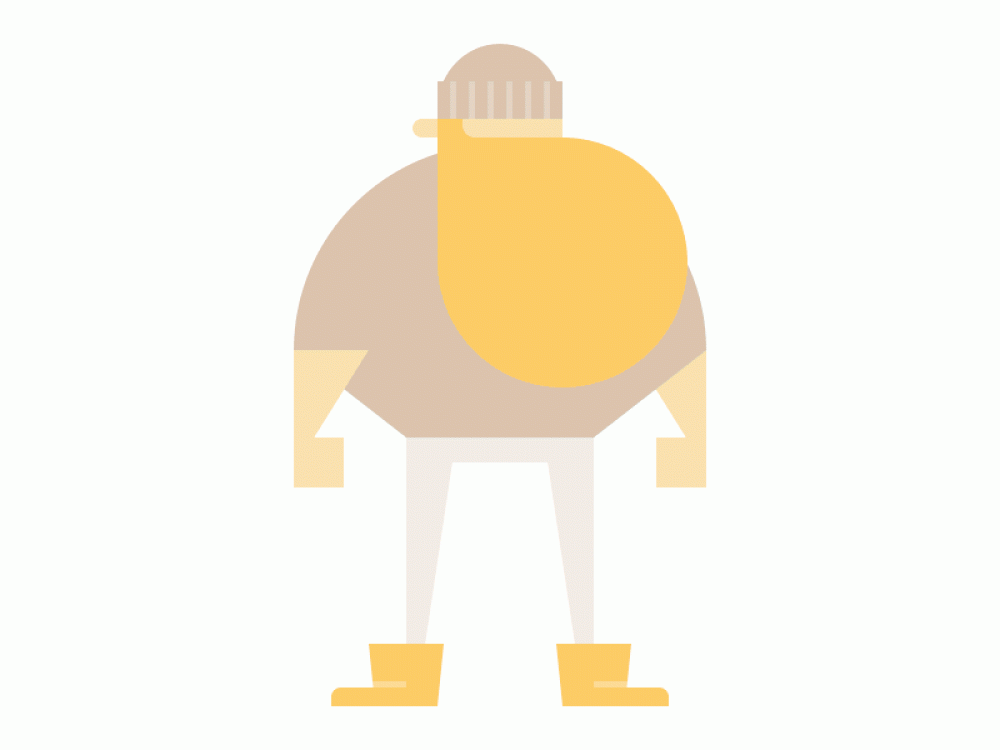Interview: Doggins Creator Brain&Brain Talks Burly Men At Sea

Several weeks ago we shared some exciting details on the second project from indie developer Brain&Brain, the folktale adventure Burly Men At Sea. The studio's first title – the lovable adventure game Doggins – is one of my personal favourite iOS games of all time. If you haven’t tried it out, you can read our review here and grab the game here.
Husband and wife duo, David and Brooke Condolora (who together comprise Brain&Brain) were kind enough to catch up with me to answer some burning questions I had about Burly Men At Sea. Enjoy!

Tell me about your inspiration for Burly Men At Sea. Is there a real-life folktale equivalent or is it purely fictional?
Brooke: The story itself is original, but it’s made up of pieces drawn from Scandinavian folklore, which I read a lot of as a kid. There’s also a little inspiration from short stories by Edgar Allen Poe and O. Henry.
You’ve noted that Burly Men At Sea “unfolds through discovery, casting the player as storyteller and wayfinder.” From this description, it seems like the player has a significant role in not only progressing the story, but also shaping it. To what extent are players able to act as the "storyteller" to shape the narrative?
Brooke: We liked the idea of a game told in the style of a folktale, with a wider approach and a moral to the story. As Burly Men at Sea was taking shape, it became a story about discovery and choice, so the gameplay follows that theme. For me, this is really what makes games exciting as a medium: the chance for the player to tell the story. Movies and books can’t do that. You’re presented with a world and characters, and they’re moving without you, and that’s all there is. You can’t walk over and attack cuccos or break things. That’s why a lot of people dislike cutscenes.
At the same time, the player expects some sort of storyline. So with Burly Men at Sea we’re creating all the parts to the story (characters, situations, setpieces) but leaving it to the player to discover a path. In each situation, there are multiple solutions that branch into unique stories.

I also find it quite interesting that the game unfolds through player discovery. How will this idea of "discovery" play out in Burly Men to move the narrative forward?
Brooke: We wanted to steer away from presenting choices to the player through dialogue or narration, which wouldn’t really fit the theme. Instead, as the player explores a scene, they discover how they might move forward. That’s actually tougher to design than it sounds, since you have to encourage the player to explore thoroughly, rather than jump immediately into the first solution. So we’re also building a lot of play into the world: things that respond to interaction, but don’t necessarily affect the story.
The design and art style for Burly Men is certainly unique. The softer shading and minimalist lines really capture that sense of preparing to set off on an adventure on the high seas. Can you give us a bit more insight into your choice of design style and what you are looking to capture?
Brooke: I wanted both the art and story to have roots in a real place, though the game’s location is fictional. The art style is inspired by modern Scandinavian design and illustration, with colors drawn from fishing villages in the Lofoten Islands of Norway. They’re full of beautiful reds and yellows from the cod-liver oil paint that was historically used (ed: see below for the colour palate being used.)

I was interested to read that your philosophy towards game development has been significantly influenced by the old school adventure game LOOM. In particular, you praised LOOM’s simplicity such as its short length, slow yet deliberate pace and basic interface. This approach is quite evident in Doggins. Are you approaching Burly Men At Sea with this same philosophy and mindset? Or did you find certain aspects of this approach didn’t work as well as you hoped?
David: I played LOOM for the first time twenty years after it was released, and it was incredibly refreshing. It stripped away all of the things that sometimes make adventure games tedious. Its world was rich, made all the more so by a storytelling style that only hinted at its history and depth, and that ignited my imagination: the world was bigger in my mind because of the fact that not everything was explained. I saw in LOOM the answers to a lot of my own problems with adventure game design, and it helped give me gain confidence in our approach.
Burly Men at Sea is being made with a similar philosophy, but I hope that it also carries forward things that we learned on Doggins. The minimal interface was great: people were able to pick the game up very quickly, and even the smallest pieces of visual storytelling - such as the dog’s tail drooping - were noticed and carried meaning. But the length of the game ended up being a problem. In fact, nearly all of the criticism of Doggins centres on how short an experience it is. LOOM was similarly criticised, as was Full Throttle, but I see the lengths of those games as a positive. In a day when games are so plentiful and cheap that our game libraries are bursting with unplayed or unfinished titles, short games are becoming more important. After all, we really see ourselves as storytellers more than game designers, and we want you to experience the entire story. Doggins is a game you’ll actually finish - but we may have unintentionally taken that idea to an extreme.
That’s something that we’re aware of as we make Burly Men at Sea. But rather than focus on length, we’re really shooting for replayability. Your choices shape the story that’s being told, and we want you to go back and find out how the story would unfold if you chose differently. That gives you both a richer experience and a better value.
Another aspect of game design that you’ve noted as quite important to you is the ability to emphasize with characters. How are you looking to create relatable personalities for our titular Burly Men At Sea?
Brooke: This time, we’re actually trying to keep the player a step removed from the characters, like a folktale would. Ideally, they’ll relate more to the story’s theme than the characters. That said, each does have a distinct personality. We’re going for a sort of Kirk/Spock/McCoy triumvirate with the burly men themselves, so they function best as parts of a whole.
Following the release of Doggins, it seemed like there was a mixed reception to the difficulty of the puzzles. Some people found it a little too easy while others found the solutions to be somewhat obscure. What did you learn from this and how will you be approaching the implementation of puzzles this time around?
David: Good puzzle design is difficult. I think the best puzzle in Doggins is the dresser at the beginning, because it’s not so much a puzzle as it is learning how to use a device. But the "squirrel on a bike" puzzle at the end of the game, which is easily the part we’ve received the most support e-mails for, was the hardest to get right. We wanted it to raise the stakes, so we decided to make it require both understanding the solution and subtle timing in carrying it out. In the end people understood what they were supposed to do, but for many the “aha!” moment of discovering the solution was overshadowed by the frustration of repeatedly trying to get the timing right.
Burly Men at Sea is interesting because it doesn’t really have puzzles. Instead, it gives you opportunities to interact with the environment and make choices. Finding the possible choices inherent in any given location will take some exploration, and could be called a "puzzle" in a sense, but there won’t be any “use skeleton arm with floating plank” type of puzzles. Once you’ve discovered your options, there is no "right" choice; the decision is more about what kind of story you as the player want to tell, and seeing what results from that.

How do you find working together as a husband and wife team? Do you find that you are able to achieve a sense of unity and understanding about a project that you may not have been able to otherwise?
David: I think we do much better work together than we ever could separately. If it weren’t for Brooke pushing for them, certain systems in Doggins probably wouldn’t have been implemented, and other parts wouldn’t have been refined to the point they needed to be. Likewise I’m able to give a non-artist’s perspective on visual design, and sometimes give her the push to take something from good to great. We both have really complimentary strengths and weaknesses, and I think the fact that we can’t really do each other’s job helps us work harmoniously. Of course, there are sometimes debates, but we usually leave them with both of us having learned something and the game being better for it.
Another advantage (and disadvantage) of being a husband-and-wife team is that we’re always working. When we walk our dog, when we go hiking, when we take a road trip; our discussion always winds its way back to the game we’re working on. Being able to talk about it so much helps us be on the same page and allows both of our personalities and influences to work their way into the story.
I understand that Burly Men At Sea will release in Q2 2015. You mentioned on your blog that there have been a few unplanned setbacks. How is development proceeding at the moment?
David: When I left Pixar to focus on Brain&Brain, Brooke had already been working on the story for Burly Men at Sea for a few months. We thought that because I was able to work on it full-time we would be able to kick development into gear, but it ended up being a really slow couple of months. Life simply got in the way: there were family emergencies, medical problems and travel for the holidays that all had to be dealt with. On top of that, I had to learn how to use a new game engine, and while we shared most of the storytelling responsibilities on Doggins, for Burly Men at Sea Brooke is shouldering the burden of writing as well art, which is a lot for one person. In the midst of all of that some work got done, but we weren’t really able to make solid progress until January 2015. Development is now moving faster, and we’re still planning on a late Q2 2015 release. Really, we have to, or we may not have the funds to continue developing the game full-time. But it’s an ambitious deadline. So we’re not naive, but hopeful.
What does Burly Men At Sea mean to you personally?
Brooke: We had a lot of fun making Doggins, but we were really eager to create something a little more meaningful with our next game. Not more serious, necessarily, but something that had purpose and tried new things. That’s what this game is for me.
David: It’s really an expression of our own lives, our sense of adventure and the seemingly-crazy choices we’ve made that brought us to this point. It’s also an opportunity to do something fresh, not following the rules of a genre, but forging a new path that synthesises storytelling and interaction in a unique way.
Writer:
Stephen Mitchell



